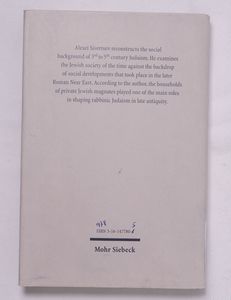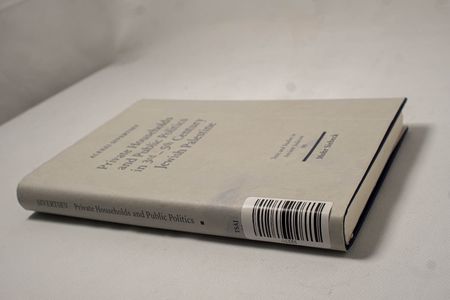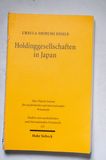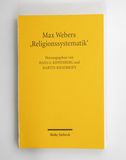
Private households and public politics in 3rd - 5th century Jewish Palestine / Alexei Sivertsev
Netto: 48.06 €51,42€
inkl. MwSt. zzgl. Versand
Bearbeitungszeit: 3 Werktage
Sofort lieferbar (auf Lager)
1x Stück verfügbar
Buchzusammenfassung:
Alexei Sivertsev examines the nature of the Jewish aristocratic households and their public functions during the later Roman and Byzantine periods (third to fifth centuries C.E.). The author first discusses the nature of the Jewish patriarchate during the third century C.E. He argues that the family of patriarchs ( nesiim) is best understood as a local city-based aristocratic clan. It emerged, along with other contemporary clans, as a result of the gradual conversion of the national aristocracy of the once independent Judean state into the municipal aristocracy of the Roman province of Palaestina in the course of the first to second centuries C.E. In the second part of this book Alexei Sivertsev addresses the specific public functions performed by Jewish aristocratic clans, such as judicial, religious, administrative and legislative. He also demonstrates the continuity that existed in this respect between the Second Commonwealth aristocratic clans and those of the rabbinic period. Finally, the third part of this study deals with the process leading to the integration of the local native aristocracies of the Roman Near East into the centralized administrative system created by the Emperors, starting with Constantine the Great. This process is analyzed specifically regarding the example of the Jewish ruling elite. The main question in this section is the degree to which the local administrative apparatus of the newly created Byzantine bureaucracy developed out of the traditional and clan-based public institutions which had existed locally throughout the Roman period.
FAQ zum Buch
Die zentralen Institutionen der jüdischen Selbstverwaltung in Palästina während der römischen Herrschaft waren das Hohe Gericht (Sanhedrin), das Hohepriesteramt und der Tempel. Modernen Geschichtsschreibung zufolge gibt es Kontroversen über die tatsächliche Macht und Funktion dieser Institutionen. Theorien diskutieren die Beziehung zwischen jüdischer Selbstverwaltung und römischer Kontrolle sowie die Rolle des Tempels in der politischen und religiösen Struktur. Probleme der Forschung umfassen die Unvollständigkeit der Quellen und die Interpretation der historischen Dokumente. Dieses FAQ wurde mit KI erstellt, basierend auf der Quelle: S. 1, ISBN 9783161477805
Aristokratische Haushalte, insbesondere jene des hohen Priesters, dienten als Sitz von privaten Gerichten und Versammlungen. Sie beherbergten Angehörige des Haushalts, aristokratische Freunde sowie technisches Personal wie Schreiber. Diese Haushalte waren zentral für die Ausübung von Autorität und spielten eine Rolle bei der Durchführung von Gerichtsverfahren, wie etwa dem Prozess Jesu. Dieses FAQ wurde mit KI erstellt, basierend auf der Quelle: S. 117, ISBN 9783161477805












